- Home
- William W. Johnstone
A Good Day to Die Page 5
A Good Day to Die Read online
Page 5
Set at the edge of the no-man’s-land that was the Staked Plains, Hangtree County was a thoroughfare for outlaw gangs, renegades, hostile Indians, and even north-ranging Mexican bandidos.
Sam was an outlander, but he had business in that part of Texas. Important business—government business. And he meant to see the job through.
The hostility leveled at him by the townfolk was a bit wearing at times, and on such a day it was pure pleasure to ride off by himself into the hills and do some hunting. Deer, an animal more savory and less dangerous than Man.
When the hunt was crowned with success well, that was a goodness. Gutted and wrapped in a canvas sheet, the carcass of a fat buck was slung head down behind the back of the saddle and tied in place by some lengths of rope.
Dusty, the horse, didn’t mind. He was used to Sam’s ways and the scent of blood and death, animal or human, bothered him not at all. He was a warhorse.
Sam headed Dusty south toward the rim of the plateau, some miles distant. He had breakfasted at dawn before riding out. Since then, he’d refreshed himself on the trail solely with beef jerky and canteen water. His empty belly rumbled its displeasure.
Back in town, he’d sell the fresh kill to the butcher, after first having cut out some prime venison steaks. The cook at the Cattleman Hotel would grill those cuts of meat over a charcoal fire, serving them up the way Sam liked, charred at the edges and red and juicy on the inside. With fried potatoes and some cut up fresh tomatoes—man! Sam’s mouth watered at the thought. He could all but taste it.
A game trail wound south through low hills shaped like sombrero crowns, overgrown with green woods. Sam followed the twisty path. Strong sunlight shone through leafy tree boughs. A bushy-tailed red squirrel darted along a branch, startling a bird into flight.
The hills shrank into mounds, low and squat, as he rode along the trail opening into a stretch of rolling fields. The sun was hotter without the shade to buffer it, but not too hot. Sam basked in its welcome warmth.
Reaching into his left breast pocket, he took out a corncob pipe and a leather tobacco pouch. Tamping the pipe bowl full of rough-cut, shredded tobacco, he struck a self-igniting lucifer on the side of his pant leg and lit up, puffing away. Smoke clouds wreathed his head as the mixture in the pipe glowed orange-red, and he enjoyed the sharp, tangy bite of the acrid smoke, venting clouds contentedly.
The ground sloped upward, rising toward a ridge running east-west. The trail entered the wooded incline, putting Sam once more in the shade. He crested the hill, pausing at the top.
Beyond lay a shallow valley, another ridge, and another. The series of ridges and valleys stretched some miles to the southern edge of the plateau.
Behind the nearest ridge a line of smoke rose into the sky, a thin black streak climbing into the heights. Sam drew slowly on his pipe, frowning. Where there’s smoke, there’s fire. And where there’s fire, there’s usually people—which in these parts means caution.
He hadn’t ridden that way before, having topped the plateau early that morning, several miles farther east. Sighting his prey, he’d tracked the buck northwest into conical hills. Returning, he’d taken a different trail, one that went directly south, instead of retracing his original route along the southeast.
He’d chosen those hunting grounds to take him away from human habitation, to where the wild game was. In the upland, a small homestead could easily be nestled out of sight in a pocket draw or under the lee of a hill.
Sam’s frown deepened. He’d forgotten to draw on his pipe and it had gone out. He exhaled softly across the lip into the bowl, blowing it clear of cool gray ashes. He stuck in his thumb, wedging the remains of the coarse-cut tobacco deep into the bowl, hardpacking it in place for later. A thrifty man, he was. Waste not, want not. He put the pipe back in his breast pocket, buttoning it shut.
The touch of his heels against Dusty’s flanks started the animal forward, down the far side of the hill. He crossed a valley, uncomfortably aware of its openness. He started up the opposite slope, dotted with stands of timber, and zigzagged uphill, angling from one clump of trees to the next, using them for cover.
Nearing the crest, he reined Dusty to a halt and got down from the saddle. Taking the reins in one hand, his left—his right was his gun hand—he led the horse toward the summit. “You’re an old woman, Sam Heller,” he said to himself, “but ...”
The ridgeline was rocky, with gaps in it. Approaching on foot, Sam neared the top without skylining, avoiding silhouetting himself against the blue backdrop where he could be seen by somebody on the other side of the ridge. Covering himself and the horse behind a rocky outcropping, he crouched and looked around.
The valley below was wide and deep. A dirt road ran along its middle, stretching east-west. A real road, not a game trail, making it Rimrock Road, the main thoroughfare running east-west across the south end of the plateau.
The line of smoke streaking the sky took its origin in the valley below. It pointed down, an elongated gray-black finger whose tip touched a wrecked, half-burned covered wagon. The bodies sprawled around it and the ground in the immediate area showed white, powdered white, as if touched by frost.
But it couldn’t be frost, not in that heat.
The air was still, with barely the breath of a breeze to ruffle the thin feather of smoke rising from the smoldering wagon. Sam studied the scene, scanning it. Some minutes passed. The valley seemed empty, peopled only by the dead. More time passed, with no change in the surroundings.
“Well,” Sam said to himself, sighing, “can’t stay here all day.” The ground looked safe, harboring no skulking bushwhackers, as far as he could tell.
How safe was it, though, with corpses strewn about?
He glanced at the deer slung across the horse’s back. He should cut it loose, to lighten Dusty’s burden if he had to run. But he had a powerful hankering for venison steaks. He was frontiersman enough to not throw away anything of value unless he damned well had to. He could always cut it loose later.
Sam mounted up. He undid the leather strap at the top of the long, custom-built holster and hauled out the mule’s-leg. He rode through the gap, down the other side of the hill. No shots greeted him, no charging horsemen.
Dusty descended at a steady pace. Nearing the valley floor, Sam smelled wood smoke from the burned wagon. and other less pleasant odors, including burning flesh. Human flesh.
The big, bulky Conestoga wagon, the kind generally favored by emigrants wending their way westward to new lands, stood about a dozen paces to one side of the dirt road. Its passengers had suffered an interrupted journey. He closed in on it.
The horses were gone. They had been cut loose from the traces binding them to the wagon tongue, most likely stolen. Its canvas-topped covering had been consumed by fire. Scraps and shreds of the charred canvas littered the ground nearby. Part of the right-hand side of the wagon was scorched and burned, but the rest was intact.
The white powder dusting the ground around the wagon was flour. It had been poured out of a slashed-open sack. Much of it had been poured over the dead.
The wagon had been vandalized. Baggage was thrown out of the wagon, suitcases and trunks breaking open upon impact. Ransacked contents, pawed over, were strewn about the ground. Various items of household bric-a-brac were broken up—chairs, a table, a cabinet, and sacks of bean, grain, and seed.
A wagon train had arrived at Hangtown the night before, laying over in the campgrounds southwest of town. The victims must have been on their way to join them when they’d been attacked by marauders. The bodies strewn about appeared to be a family of seven—two oldsters, a gray-bearded man and an old woman; a middle-aged couple, probably man and wife; a beardless youth in his mid-teens; a twelve-year-old girl; and a boy of ten. Most of the bodies were naked, their nudity white and pale as grubs that swarm in the rotten wood of fallen trees.
Robbery and murder were frequent occurrences on the frontier, but this outrage was marked by an emphasis on
torture and murder. It was ghoulish bloodletting, executed, no doubt, with lipsmacking relish.
The middle-aged man, squat and stocky, was tied upside down to the right rear wheel of the wagon, braided buffalo-hide ropes binding him in place. Underneath him was a slow-burning fire. His face and head were burned beyond recognition.
The gray-bearded oldster had been shot several times, none of them fatal. He’d been cut up pretty badly, his naked torso scored with multiple stab and slash wounds. His crotch was worked on with a hatchet, but that wasn’t what killed him. He’d been scalped—alive—and then his skull was bashed in by stone-headed war clubs.
Nearby lay the corpse of a young girl, thin, scrawny, and long-limbed, about eleven or twelve years old. She’d been shot once through the side of the head. A mercy killing.
Sam guessed the old man had shot her before she could be taken alive by the raiders. Cheated of their fun, they’d taken their wrath out on him, killing him by slow degrees.
A teenage boy lay facedown in the grass, pierced with arrows.
The woman, middle-aged and thick bodied, lay on her back, faceup. She’d been raped, of course, not once but often. She’d been beaten, broken, mutilated, and scalped.
The old woman had had similar treatment. As an added refinement, a tree branch had been shoved between her legs and set on fire. Sam could only hope it had been done after she was dead.
“Devilments!” Sam muttered to himself. His voice sounded strange, a toad’s croak, startling him. His mouth was bone dry.
Obscene butchery was nothing new to Sam Heller. He’d grown up in southwest Minnesota where the eastern branches of the Sioux roamed, raided, and killed, terrorizing settlers. In the Dakota badlands—what the Sioux considered their home grounds—he’d seen similar remains of pioneers, prospectors, and other white invaders.
No less enthusiastic aficionados of torture were the Apaches, whom he’d tangled with in Arizona and New Mexico territories. And he’d seen plenty of atrocities committed by and against soldiers and civilians of both sides during the Civil War.
This outrage figured to be the handiwork of Comanches.
Recent reports had reached Hangtown of Comanche raids on the plains west of the Breaks. Isolated incidents as yet, brutal and alarming, prompted the commanding officer at Fort Pardee to detail a cavalry troop to meet Major Adams’s wagon train at Anvil Flats and escort it safely to the Santa Fe Trail. There it would be met by another cavalry troop from a New Mexico fort. That rendezvous was scheduled for sometime that day.
Sam’s scalp tingled, with good reason. He wore his yellow hair long, scout-style. It was a scout’s way of taunting the savages, as if saying, You can’t take my hair. For a moment, the boast rang a tad hollow. Still, he intended to keep his shoulder-length yellow hair intact for a while longer—a good while longer. Or die trying.
The prospect had been made less sure by the grisly evidence before his eyes of Comanche raiders.
Sam examined the sign. The marauders’ tracks went east along Rimrock Road through the valley.
He cut the deer carcass loose and threw it in the brush.
Pointing Dusty’s head south, he moved forward, climbing the north slope of the far ridge, up and out of the valley. Away.
FOUR
One second, they weren’t there; the next, they were.
Seton Fisher was carrying water back to the ranch house from the stream. He had a full bucket in each hand, held by the handles. It was early afternoon, it was hot, and the buckets were heavy.
In his mid-forties, Fisher was strong armed and thick bodied. Sweat stung his eyes, blurring them. He paused, trying to blink them clear because he didn’t want to interrupt toting the water back to the house by setting down a bucket to wipe his eyes clean.
Fisher’s ranch was near the south rim of the Upland Plateau. It was a good location, but a hard go to eke out a living from the Texas hill country for himself and his family.
The site occupied a saddle between two ridges running east-west. The south ridge hid the edge of the plateau and the flat below, screening them from view. The north ridge lay on a flat below Sentry Hill, the most prominent landform in the area. Between them lay a valley of gently rolling grasslands—Seton Fisher’s spread.
A small herd of cattle, widely scattered, grazed on the greenery. A south-flowing stream ran through the property. A flat-roofed house sat on a rise within walking distance of the water. Ringed by cottonwood trees, the rise gave welcome shade on hot summer days.
The ranch house faced south, a modest two-room dwelling with windows and a covered dogtrot passage connecting both rooms. Glass for the windows was an unaffordable luxury for the Fisher ranch. Most of the year, the windows were sealed with semitransparent oiled paper. During warm weather months, the window frames were left bare and uncovered to let in fresh air.
Outbuildings included an open-sided barn and a shed. Nearby were a haystack and a corral with several horses and a mule penned inside. The dooryard, an open space loosely bounded by the house and outbuildings, was nothing but brown dirt. Traffic by humans and domestic animals had trampled out the grass.
Fisher was squat and burly, with a barrel-shaped torso. His bushy eyebrows, the hair fringing his balding head, and a rufflike beard were all streaked with gray. He was a onetime cotton planter from the rich black-earth district around Dallas. His first wife being deceased, he’d taken a second wife, Ada, a war widow, and adopted her young daughter, Lydia.
War had killed King Cotton, closing down markets and causing Fisher, like so many others, to go bust. It had also killed his oldest son Emory, who’d fought and died for the Confederacy. His next-born, Eben, was in his midteens, but big for his age.
By 1864, Seton Fisher had feared the lad would be rounded up by the relentless recruiters of the Confederate army. He’d feared that he, too, was not immune from conscription since the army was taking pretty much any male able to stand on his own two feet who hadn’t used those feet to make scarce while recruitment agents were scouring the district.
Seton Fisher had moved his family west, from Dallas to Forth Worth, then Weatherford and Mineral Wells, and still farther west until finally fetching to a halt in Hangtree County.
But there was no living to be made in Hangtown. Mindful of draft recruiters and their ceaseless quest for Confederate cannon fodder, Fisher had deemed it best to put more distance between his family and the haunts of men, claiming land on the flat west of the town.
The south rim of the plateau had looked right for his purposes. It was far enough from civilization to keep the authorities to a minimum, but not so far that he couldn’t get to town within a half-day’s ride to fetch supplies or flee to in case of an emergency.
Other ranches, farmhouses, and cabins lay scattered up on the south rim but their owners, like Seton Fisher, had a passion for seclusion and their own reasons for anonymity.
Brooding over the landscape lay the heights of Sentry Hill. A spring at its southern base was the source of Locust Lake, whose gray-green hue was the color of aged, weathered copper. The lake fed a number of streams running to the plateau’s edge and down its southern face, coursing southeast across the flat.
Fisher settled his family on a tract of land between Sentry Hill and the south rim. The uplands were overrun by maverick cattle, runaway longhorns that had gone back to the brush. They thrived and thronged the hill country, multiplying there as they did on the flat and indeed throughout much of Texas during the war years. The increase would ultimately make a cattle kingdom of the Lone Star State—but not yet.
By hard work and great pains, the family had managed to gather and brand a small herd of longhorns, enough for their needs. Not until the family was well and truly settled did Seton Fisher discover the reason for the ready availability of good grazing land in Hangtree County.
The threat of imminent civil war in 1860 had caused the federal government to close a string of forts it maintained along the western frontier. Manned by cavalry,
the forts had been strongholds designed to suppress raids by Comanches, Kiowas, and Lipan Apaches. Washington needed the troops for the coming war in the all-important theaters east of the Mississippi.
When war broke out in 1861, the Texas branch of the Confederacy was too hard pressed fighting the Yanks along the Gulf Coast, in New Mexico, and in East Texas along the Louisiana border, to spare more than a handful of troops to take up the Indian-fighting duties formerly handled by U.S. cavalry and Texas Rangers.
In Hangtree County, settlers in the uplands mostly picked up and moved out rather than stay put and be massacred. However, with the settlers largely gone, the Indians shunned their former raiding grounds, knowing they were no longer fit and ready sources of captives, scalps, and stolen horses.
“Now you tell me! ” was Fisher’s reaction to these disclosures, confided to him by residents of Hangtown during a memorable visit to barter cattle hides and tallow for supplies.
It was too late for him to back out. He had filed his claim, cleared the site of trees and brush, built the house and outbuildings, and made the land his. They had equity in it now—sweat equity. To give it up was unthinkable.
Besides, the Comanche threat was overblown. He thought the Hangtown locals were having fun at the expense of the newcomer, the outsider, telling tall tales to spook the greenhorn. That’s what he told himself and his wife. He pretty much managed to convince himself and she knew better than to contradict him and get a beating for her troubles.
For a fact, few Comanches had been seen in those parts in recent years, said sightings having been reported in the Breaks and farther west. Seton Fisher was a stubborn man. So long as he and his family took reasonable precautions, they would be safe from Indians.

 Riding Shotgun
Riding Shotgun Bloodthirsty
Bloodthirsty Bullets Don't Argue
Bullets Don't Argue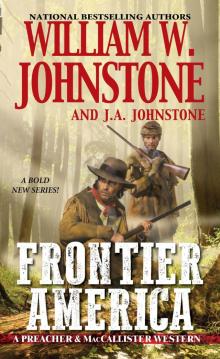 Frontier America
Frontier America Hang Them Slowly
Hang Them Slowly Live by the West, Die by the West
Live by the West, Die by the West The Black Hills
The Black Hills Torture of the Mountain Man
Torture of the Mountain Man Preacher's Rage
Preacher's Rage Stranglehold
Stranglehold Cutthroats
Cutthroats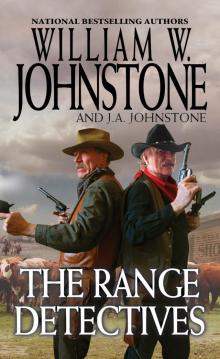 The Range Detectives
The Range Detectives A Jensen Family Christmas
A Jensen Family Christmas Have Brides, Will Travel
Have Brides, Will Travel Dig Your Own Grave
Dig Your Own Grave Burning Daylight
Burning Daylight Blood for Blood
Blood for Blood Winter Kill
Winter Kill Mankiller, Colorado
Mankiller, Colorado Preacher's Massacre
Preacher's Massacre The Doomsday Bunker
The Doomsday Bunker Treason in the Ashes
Treason in the Ashes MacCallister, The Eagles Legacy: The Killing
MacCallister, The Eagles Legacy: The Killing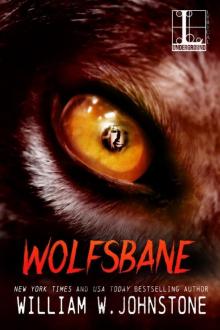 Wolfsbane
Wolfsbane Danger in the Ashes
Danger in the Ashes Gut-Shot
Gut-Shot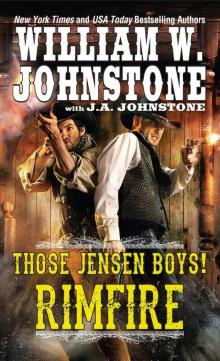 Rimfire
Rimfire Hatred in the Ashes
Hatred in the Ashes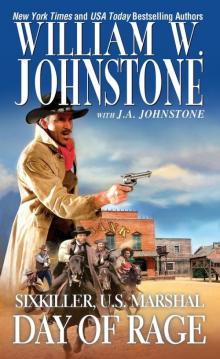 Day of Rage
Day of Rage Dreams of Eagles
Dreams of Eagles Out of the Ashes
Out of the Ashes The Return Of Dog Team
The Return Of Dog Team Better Off Dead
Better Off Dead Betrayal of the Mountain Man
Betrayal of the Mountain Man Rattlesnake Wells, Wyoming
Rattlesnake Wells, Wyoming A Crying Shame
A Crying Shame The Devil's Touch
The Devil's Touch Courage In The Ashes
Courage In The Ashes The Jackals
The Jackals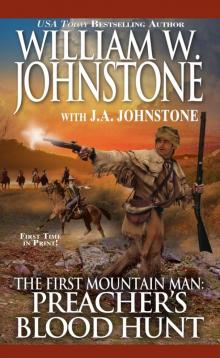 Preacher's Blood Hunt
Preacher's Blood Hunt Luke Jensen Bounty Hunter Dead Shot
Luke Jensen Bounty Hunter Dead Shot A Good Day to Die
A Good Day to Die Winchester 1886
Winchester 1886 Massacre of Eagles
Massacre of Eagles A Colorado Christmas
A Colorado Christmas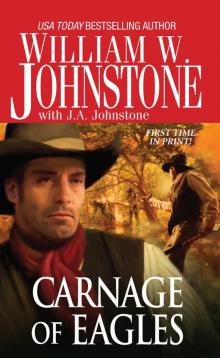 Carnage of Eagles
Carnage of Eagles The Family Jensen # 1
The Family Jensen # 1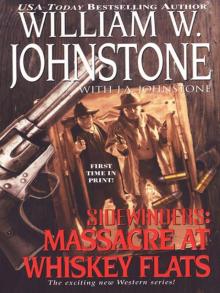 Sidewinders#2 Massacre At Whiskey Flats
Sidewinders#2 Massacre At Whiskey Flats Suicide Mission
Suicide Mission Preacher and the Mountain Caesar
Preacher and the Mountain Caesar Sawbones
Sawbones Preacher's Hell Storm
Preacher's Hell Storm The Last Gunfighter: Hell Town
The Last Gunfighter: Hell Town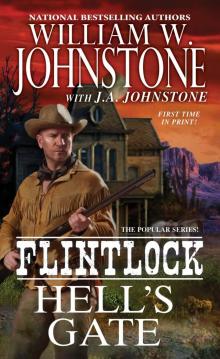 Hell's Gate
Hell's Gate Monahan's Massacre
Monahan's Massacre Code of the Mountain Man
Code of the Mountain Man The Trail West
The Trail West Buckhorn
Buckhorn A Rocky Mountain Christmas
A Rocky Mountain Christmas Darkly The Thunder
Darkly The Thunder Pride of Eagles
Pride of Eagles Vengeance Is Mine
Vengeance Is Mine Trapped in the Ashes
Trapped in the Ashes Twelve Dead Men
Twelve Dead Men Legion of Fire
Legion of Fire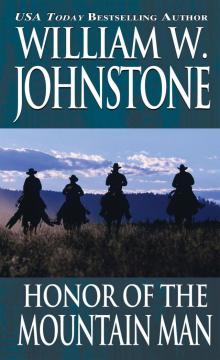 Honor of the Mountain Man
Honor of the Mountain Man Massacre Canyon
Massacre Canyon Smoke Jensen, the Beginning
Smoke Jensen, the Beginning Song of Eagles
Song of Eagles Slaughter of Eagles
Slaughter of Eagles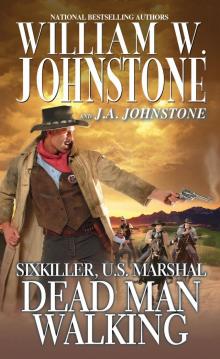 Dead Man Walking
Dead Man Walking The Frontiersman
The Frontiersman Brutal Night of the Mountain Man
Brutal Night of the Mountain Man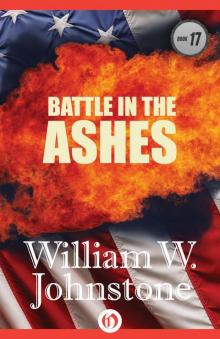 Battle in the Ashes
Battle in the Ashes Chaos in the Ashes
Chaos in the Ashes MacCallister Kingdom Come
MacCallister Kingdom Come Cat's Eye
Cat's Eye Butchery of the Mountain Man
Butchery of the Mountain Man Dead Before Sundown
Dead Before Sundown Tyranny in the Ashes
Tyranny in the Ashes Snake River Slaughter
Snake River Slaughter A Time to Slaughter
A Time to Slaughter The Last of the Dogteam
The Last of the Dogteam Massacre at Powder River
Massacre at Powder River Sidewinders
Sidewinders Night Mask
Night Mask Preacher's Slaughter
Preacher's Slaughter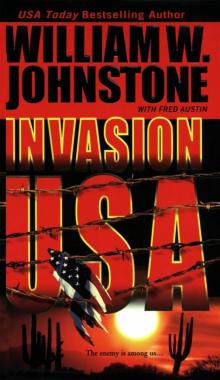 Invasion USA
Invasion USA Defiance of Eagles
Defiance of Eagles The Jensen Brand
The Jensen Brand Frontier of Violence
Frontier of Violence Bleeding Texas
Bleeding Texas The Lawless
The Lawless Blood Bond
Blood Bond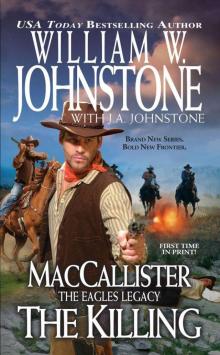 MacCallister: The Eagles Legacy: The Killing
MacCallister: The Eagles Legacy: The Killing Showdown
Showdown The Legend of Perley Gates
The Legend of Perley Gates Pursuit Of The Mountain Man
Pursuit Of The Mountain Man Scream of Eagles
Scream of Eagles Preacher's Showdown
Preacher's Showdown Ordeal of the Mountain Man
Ordeal of the Mountain Man The Last Gunfighter: The Drifter
The Last Gunfighter: The Drifter Ride the Savage Land
Ride the Savage Land Ghost Valley
Ghost Valley Fire in the Ashes
Fire in the Ashes Matt Jensen, The Last Mountain Man The Eyes of Texas
Matt Jensen, The Last Mountain Man The Eyes of Texas Deadly Trail
Deadly Trail Rage of Eagles
Rage of Eagles Moonshine Massacre
Moonshine Massacre Destiny in the Ashes
Destiny in the Ashes Violent Sunday
Violent Sunday Alone in the Ashes ta-5
Alone in the Ashes ta-5 Preacher's Peace
Preacher's Peace Preacher's Pursuit (The First Mountain Man)
Preacher's Pursuit (The First Mountain Man) Preacher's Quest
Preacher's Quest The Darkest Winter
The Darkest Winter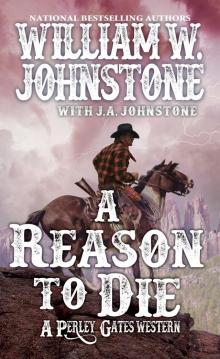 A Reason to Die
A Reason to Die Bloodshed of Eagles
Bloodshed of Eagles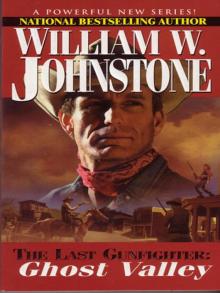 The Last Gunfighter: Ghost Valley
The Last Gunfighter: Ghost Valley A Big Sky Christmas
A Big Sky Christmas Hang Him Twice
Hang Him Twice Blood Bond 3
Blood Bond 3 Seven Days to Hell
Seven Days to Hell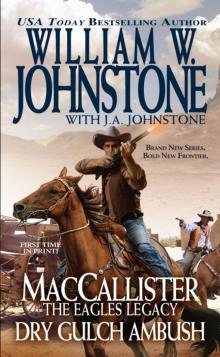 MacCallister, the Eagles Legacy: Dry Gulch Ambush
MacCallister, the Eagles Legacy: Dry Gulch Ambush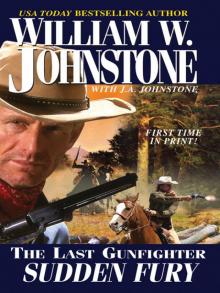 The Last Gunfighter
The Last Gunfighter Brotherhood of the Gun
Brotherhood of the Gun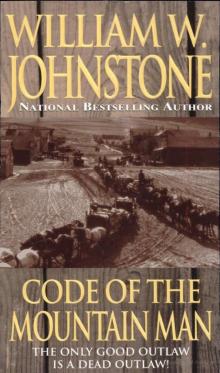 Code of the Mountain Man tlmm-8
Code of the Mountain Man tlmm-8 Prey
Prey MacAllister
MacAllister Thunder of Eagles
Thunder of Eagles Rampage of the Mountain Man
Rampage of the Mountain Man Ambush in the Ashes
Ambush in the Ashes Texas Bloodshed s-6
Texas Bloodshed s-6 Savage Texas: The Stampeders
Savage Texas: The Stampeders Sixkiller, U.S. Marshal
Sixkiller, U.S. Marshal Shootout of the Mountain Man
Shootout of the Mountain Man Damnation Valley
Damnation Valley Renegades
Renegades The Family Jensen
The Family Jensen The Last Rebel: Survivor
The Last Rebel: Survivor Guns of the Mountain Man
Guns of the Mountain Man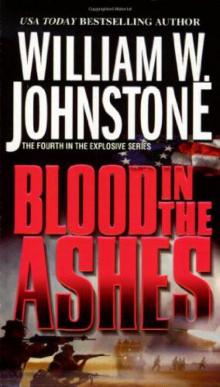 Blood in the Ashes ta-4
Blood in the Ashes ta-4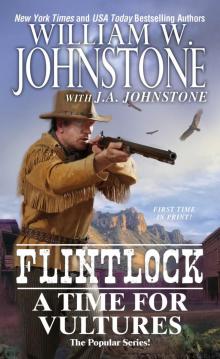 A Time for Vultures
A Time for Vultures Savage Guns
Savage Guns Terror of the Mountain Man
Terror of the Mountain Man Phoenix Rising:
Phoenix Rising: Savage Country
Savage Country River of Blood
River of Blood Bloody Sunday
Bloody Sunday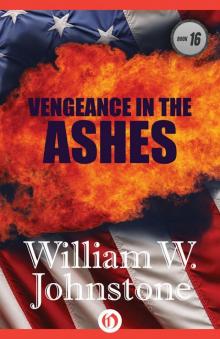 Vengeance in the Ashes
Vengeance in the Ashes Butch Cassidy the Lost Years
Butch Cassidy the Lost Years The First Mountain Man
The First Mountain Man Preacher
Preacher Heart of the Mountain Man
Heart of the Mountain Man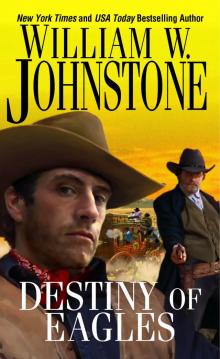 Destiny of Eagles
Destiny of Eagles Evil Never Sleeps
Evil Never Sleeps The Devil's Legion
The Devil's Legion Forty Times a Killer
Forty Times a Killer Slaughter
Slaughter Day of Independence
Day of Independence Betrayal in the Ashes
Betrayal in the Ashes Jack-in-the-Box
Jack-in-the-Box Will Tanner
Will Tanner This Violent Land
This Violent Land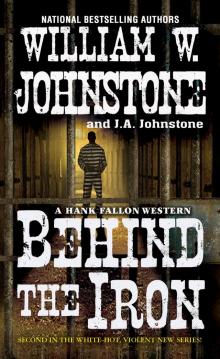 Behind the Iron
Behind the Iron Blood in the Ashes
Blood in the Ashes Warpath of the Mountain Man
Warpath of the Mountain Man Deadly Day in Tombstone
Deadly Day in Tombstone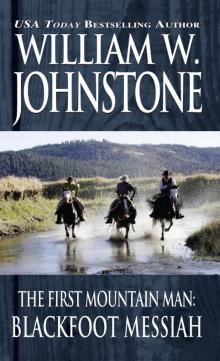 Blackfoot Messiah
Blackfoot Messiah Pitchfork Pass
Pitchfork Pass Reprisal
Reprisal The Great Train Massacre
The Great Train Massacre A Town Called Fury
A Town Called Fury Rescue
Rescue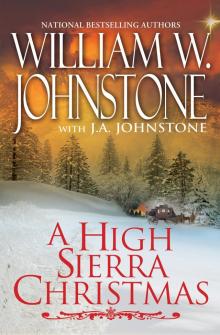 A High Sierra Christmas
A High Sierra Christmas Quest of the Mountain Man
Quest of the Mountain Man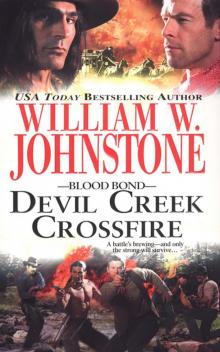 Blood Bond 5
Blood Bond 5 The Drifter
The Drifter Survivor (The Ashes Book 36)
Survivor (The Ashes Book 36) Terror in the Ashes
Terror in the Ashes Blood of the Mountain Man
Blood of the Mountain Man Blood Bond 7
Blood Bond 7 Cheyenne Challenge
Cheyenne Challenge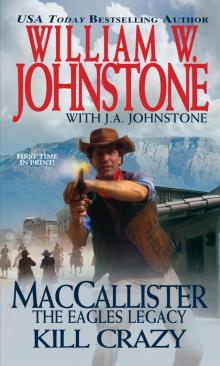 Kill Crazy
Kill Crazy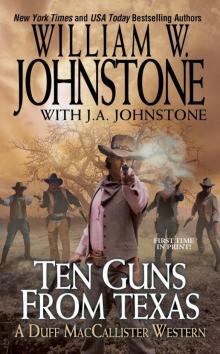 Ten Guns from Texas
Ten Guns from Texas Preacher's Fortune
Preacher's Fortune Preacher's Kill
Preacher's Kill Right between the Eyes
Right between the Eyes Destiny Of The Mountain Man
Destiny Of The Mountain Man Rockabilly Hell
Rockabilly Hell Forty Guns West
Forty Guns West Hour of Death
Hour of Death The Devil's Cat
The Devil's Cat Triumph of the Mountain Man
Triumph of the Mountain Man Fury in the Ashes
Fury in the Ashes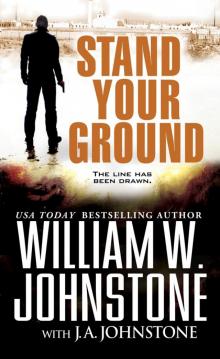 Stand Your Ground
Stand Your Ground The Devil's Heart
The Devil's Heart Brotherhood of Evil
Brotherhood of Evil Smoke from the Ashes
Smoke from the Ashes Firebase Freedom
Firebase Freedom The Edge of Hell
The Edge of Hell Bats
Bats Remington 1894
Remington 1894 Devil's Kiss d-1
Devil's Kiss d-1 Watchers in the Woods
Watchers in the Woods Devil's Heart
Devil's Heart A Dangerous Man
A Dangerous Man No Man's Land
No Man's Land War of the Mountain Man
War of the Mountain Man Hunted
Hunted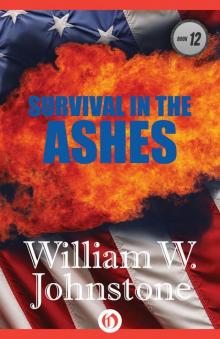 Survival in the Ashes
Survival in the Ashes The Forbidden
The Forbidden Rage of the Mountain Man
Rage of the Mountain Man Anarchy in the Ashes
Anarchy in the Ashes Those Jensen Boys!
Those Jensen Boys! Matt Jensen: The Last Mountain Man Purgatory
Matt Jensen: The Last Mountain Man Purgatory Bad Men Die
Bad Men Die Blood Valley
Blood Valley Carnival
Carnival The Last Mountain Man
The Last Mountain Man Talons of Eagles
Talons of Eagles Bounty Hunter lj-1
Bounty Hunter lj-1 Rockabilly Limbo
Rockabilly Limbo The Blood of Patriots
The Blood of Patriots A Texas Hill Country Christmas
A Texas Hill Country Christmas Torture Town
Torture Town The Bleeding Edge
The Bleeding Edge Gunsmoke and Gold
Gunsmoke and Gold Revenge of the Dog Team
Revenge of the Dog Team Flintlock
Flintlock Devil's Kiss
Devil's Kiss Rebel Yell
Rebel Yell Eight Hours to Die
Eight Hours to Die Hell's Half Acre
Hell's Half Acre Revenge of the Mountain Man
Revenge of the Mountain Man Battle of the Mountain Man
Battle of the Mountain Man Trek of the Mountain Man
Trek of the Mountain Man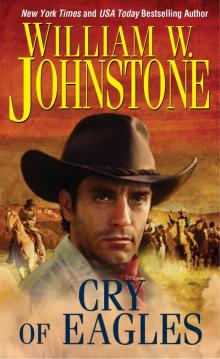 Cry of Eagles
Cry of Eagles Blood on the Divide
Blood on the Divide Triumph in the Ashes
Triumph in the Ashes The Butcher of Baxter Pass
The Butcher of Baxter Pass Sweet Dreams
Sweet Dreams Preacher's Assault
Preacher's Assault Vengeance of the Mountain Man
Vengeance of the Mountain Man MacCallister: The Eagles Legacy
MacCallister: The Eagles Legacy Rockinghorse
Rockinghorse From The Ashes: America Reborn
From The Ashes: America Reborn Hate Thy Neighbor
Hate Thy Neighbor A Frontier Christmas
A Frontier Christmas Justice of the Mountain Man
Justice of the Mountain Man Law of the Mountain Man
Law of the Mountain Man Matt Jensen, The Last Mountain Man
Matt Jensen, The Last Mountain Man Burning
Burning Wyoming Slaughter
Wyoming Slaughter Return of the Mountain Man
Return of the Mountain Man Ambush of the Mountain Man
Ambush of the Mountain Man Anarchy in the Ashes ta-3
Anarchy in the Ashes ta-3 Absaroka Ambush
Absaroka Ambush Texas Bloodshed
Texas Bloodshed The Chuckwagon Trail
The Chuckwagon Trail The Violent Land
The Violent Land Assault of the Mountain Man
Assault of the Mountain Man Ride for Vengeance
Ride for Vengeance Preacher's Justice
Preacher's Justice Manhunt
Manhunt Cat's Cradle
Cat's Cradle Power of the Mountain Man
Power of the Mountain Man Flames from the Ashes
Flames from the Ashes A Stranger in Town
A Stranger in Town Powder Burn
Powder Burn Trail of the Mountain Man
Trail of the Mountain Man Toy Cemetery
Toy Cemetery Sandman
Sandman Escape from the Ashes
Escape from the Ashes Winchester 1887
Winchester 1887 Shawn O'Brien Manslaughter
Shawn O'Brien Manslaughter Home Invasion
Home Invasion Hell Town
Hell Town D-Day in the Ashes
D-Day in the Ashes The Devil's Laughter
The Devil's Laughter An Arizona Christmas
An Arizona Christmas Paid in Blood
Paid in Blood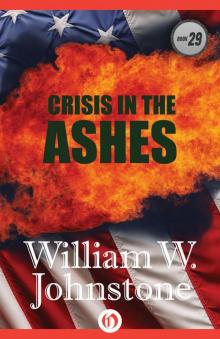 Crisis in the Ashes
Crisis in the Ashes Imposter
Imposter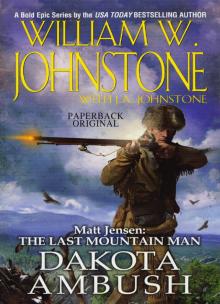 Dakota Ambush
Dakota Ambush The Edge of Violence
The Edge of Violence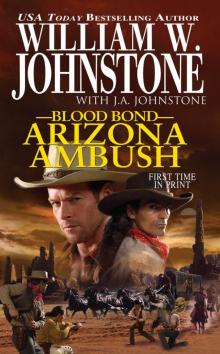 Arizona Ambush
Arizona Ambush Texas John Slaughter
Texas John Slaughter Valor in the Ashes
Valor in the Ashes Tyranny
Tyranny Slaughter in the Ashes
Slaughter in the Ashes Warriors from the Ashes
Warriors from the Ashes Venom of the Mountain Man
Venom of the Mountain Man Alone in the Ashes
Alone in the Ashes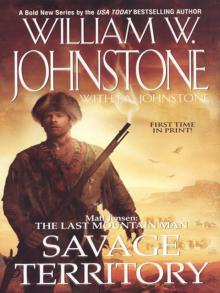 Matt Jensen, The Last Mountain Man Savage Territory
Matt Jensen, The Last Mountain Man Savage Territory Death in the Ashes
Death in the Ashes Savagery of The Mountain Man
Savagery of The Mountain Man A Lone Star Christmas
A Lone Star Christmas Black Friday
Black Friday Montana Gundown
Montana Gundown Journey into Violence
Journey into Violence Colter's Journey
Colter's Journey Eyes of Eagles
Eyes of Eagles Blood Bond 9
Blood Bond 9 Avenger
Avenger Black Ops #1
Black Ops #1 Shot in the Back
Shot in the Back The Last Gunfighter: Killing Ground
The Last Gunfighter: Killing Ground Preacher's Fire
Preacher's Fire Day of Reckoning
Day of Reckoning Phoenix Rising pr-1
Phoenix Rising pr-1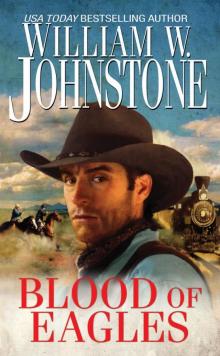 Blood of Eagles
Blood of Eagles Trigger Warning
Trigger Warning Absaroka Ambush (first Mt Man)/Courage Of The Mt Man
Absaroka Ambush (first Mt Man)/Courage Of The Mt Man Strike of the Mountain Man
Strike of the Mountain Man